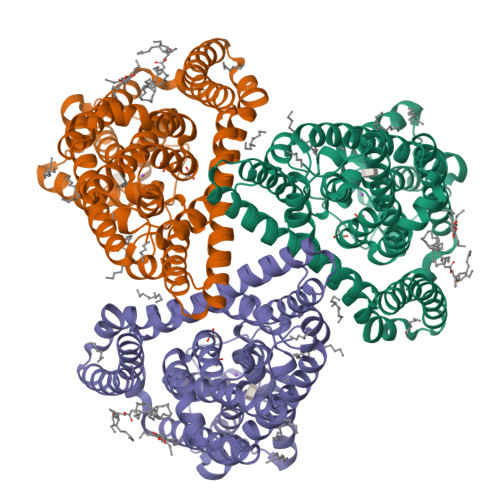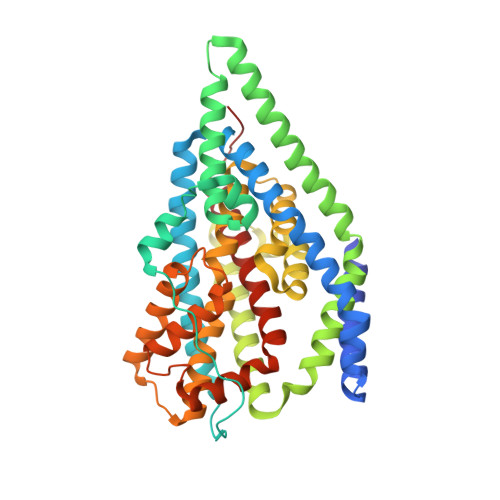Na + -dependent gate dynamics and electrostatic attraction ensure substrate coupling in glutamate transporters.
Alleva, C., Kovalev, K., Astashkin, R., Berndt, M.I., Baeken, C., Balandin, T., Gordeliy, V., Fahlke, C., Machtens, J.P.(2020) Sci Adv 6
- PubMed: 33208356
- DOI: https://doi.org/10.1126/sciadv.aba9854
- Primary Citation of Related Structures:
7AHK - PubMed Abstract:
Excitatory amino acid transporters (EAATs) harness [Na + ], [K + ], and [H + ] gradients for fast and efficient glutamate removal from the synaptic cleft. Since each glutamate is cotransported with three Na + ions, [Na + ] gradients are the predominant driving force for glutamate uptake. We combined all-atom molecular dynamics simulations, fluorescence spectroscopy, and x-ray crystallography to study Na + :substrate coupling in the EAAT homolog Glt Ph A lipidic cubic phase x-ray crystal structure of wild-type, Na + -only bound Glt Ph at 2.5-Å resolution revealed the fully open, outward-facing state primed for subsequent substrate binding. Simulations and kinetic experiments established that only the binding of two Na + ions to the Na1 and Na3 sites ensures complete HP2 gate opening via a conformational selection-like mechanism and enables high-affinity substrate binding via electrostatic attraction. The combination of Na + -stabilized gate opening and electrostatic coupling of aspartate to Na + binding provides a constant Na + :substrate transport stoichiometry over a broad range of neurotransmitter concentrations.
Organizational Affiliation:
Institute of Biological Information Processing (IBI-1), Molekular- und Zellphysiologie, and JARA-HPC, Forschungszentrum Jülich, Jülich, Germany.
























